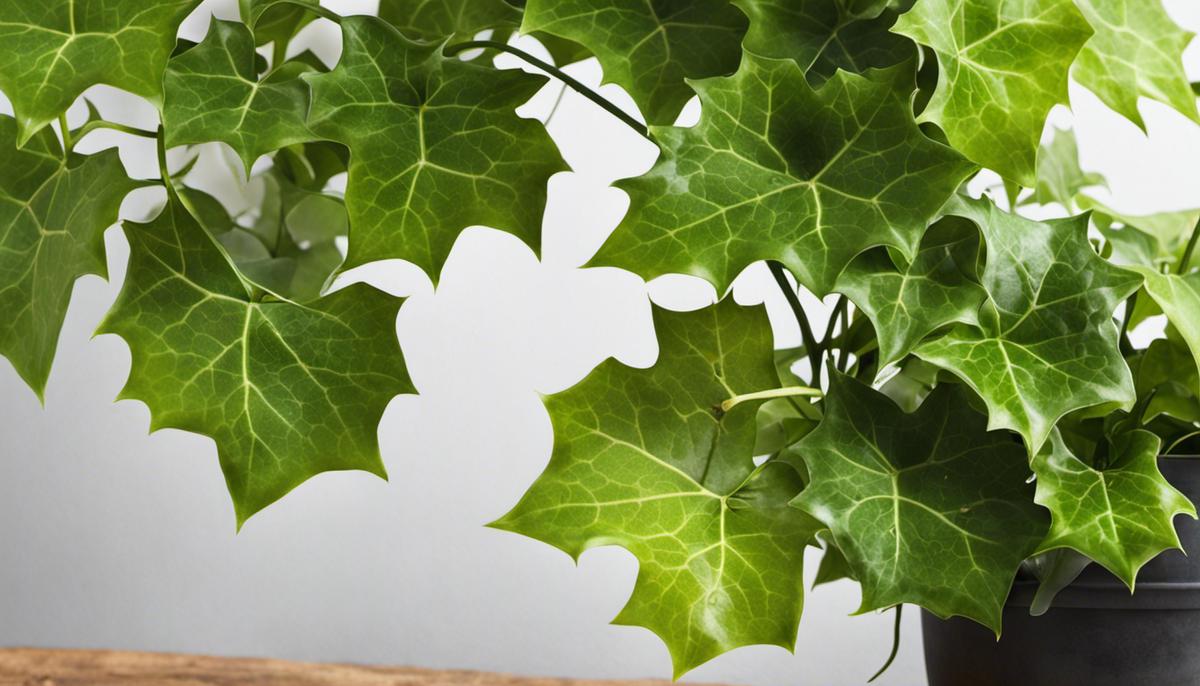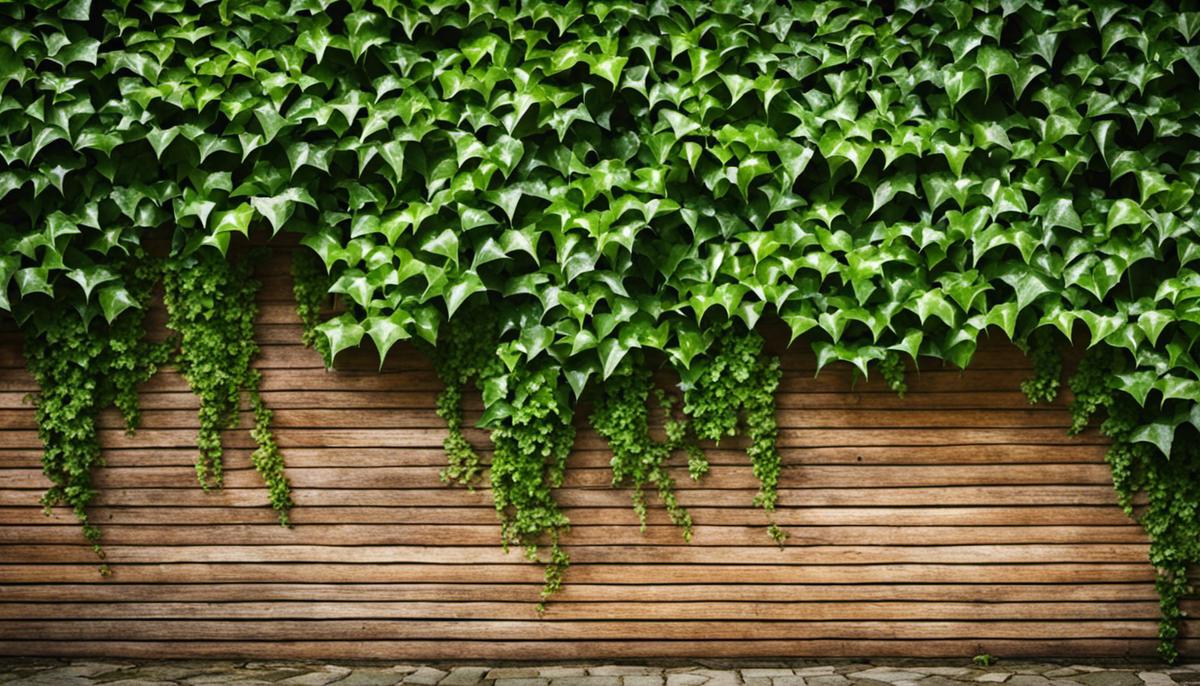
English Ivy Care
Description: English Ivy, with its hallmark cascading vines and verdant leaves, has been a beloved houseplant for generations, but its lush beauty comes with specific care requirements. Proper watering, appropriate lighting, and adequate fertilization are cornerstones of ensuring vibrant growth. Handling these key areas with precision can help to nurture a thriving Ivy that is not only aesthetically pleasing but also contributes significantly to quality indoor air. This discussion aims to comprehensively expound on these three crucial factors of Ivy care to empower every plant aficionado to successfully nurture their English Ivy. English Ivy, lovingly known as Hedera helix, is truly a botanic beauty. A hardy, evergreen vine, she graces walls, fences, and even indoor spaces with her trailing, elegant greenery. Today, we're delving into the waters of maintaining this exquisite green machine- specifically, how much hydration she thirsts for to flourish in all her leafy glory. Probably one of the most asked questions about plant care is, "How much water does it need?" When it comes to the English Ivy, there's no definitive "cup-count," but instead, a hands-on, intuitive method to ensure it thrives. First and foremost, remember that English Ivy loves evenly moist soil. This doesn't mean soggy or water-logged. Instead, imagine the feel of a wrung-out sponge, moist but not dripping. That's the sweet spot. The trick to ascertain the need for water lies beneath the surface. Indeed, it's all about the "Finger Test." Sounds intriguing, doesn't it? For the uninitiated, the Finger Test technique involves pushing a finger two inches into the soil. If it's dry at that depth, it's time to bestow some water love on your Ivy. Generally, a good watering routine for potted English Ivy indoors is to water deeply until it runs out of the pot's drainage holes about once a week. However, tweak the watering frequency based on the season. During the hot, dry summer months, our green companion might need hydration twice per week. On the other hand, in the colder months, as the plant goes into dormancy and evaporation slows, watering can be reduced. Now, for all you outdoor Ivy growers, the rules vary a smidge. While outdoor English Ivy still prefers evenly moist soil, rainfall usually provides adequate hydration. But in drought or exceptionally hot conditions, a weekly deep watering will keep your ivy content. Some gardener's secret? Never let your English Ivy sit in water. Drainage is key in its care, for soggy roots are a fast lane to rotten plants. Always ensure that water can escape from the bottom of the pot after watering, and if the saucer fills with overflow, be sure to empty it promptly. In conclusion, while there's no exact amount specified, understanding your English Ivy's water needs is about observing and touch-testing the soil. So, slip on those gardening gloves and let your fingers be your guide. Happy watering! After all, hydration is the highway to a thriving, graceful English Ivy. That's powerful plant parenthood for you! When it comes to cultivating a robust and flourishing English Ivy plant, the quotes "let there be light" and "variety is the spice of life" take on a deeper meaning. Nurturing an English Ivy plant composes not only of understanding its watering needs, which we've already tackled in depth, but also the significance of proper light exposure. English Ivy plants, like most green life forms, depend on light exposure for photosynthesis. Intelligence when it comes to the light environment can make the difference between vibrant growth and languishing foliage. Firstly, it's vital to understand that English Ivy plants prefer bright, indirect light. At their native habitat of woodlands and forested areas, these plants enjoy dappled sunbeam filtering through the canopy. Simulate this environment by placing your ivy in a spot where it can soak up bright but filtered light. East-facing windows offer a magnificent balance for this demand. What if you don't have North or East-facing windows? Don't fret. Artificial light, such as fluorescent lights, can work wonders for English Ivy plants. These emit the right balance of rays required for photosynthesis without the harm attributed to direct sunlight. Considering an average of 10 to 12 hours of artificial illumination per day is essential, adjusting depending on the plant's response. Besides bestowing vibrant growth, mild light conditions can also help prevent pests. English Ivy is susceptible to insect infestations. Conditions that are overly dark or sunny can lead to stress, making them more vulnerable to pests. Bright, indirect light contributes to a stress-free environment, breeding more robust plants. Variation in light exposure also keeps English Ivy on their toes, ensuring good health. While winter approaches, be mindful that the short daylight hours can affect your ivy's well-being. To compensate for the decrease in natural light, either relocate your plant to a more illuminated spot or increase the duration of artificial light. Avoiding direct sun exposure is crucial, particularly during summer, as it can lead to leaf scorching. If you observe yellowing leaves, this could indicate overexposure to light. Consequently, moving your plant to a less illuminated spot could alleviate this issue. Finally, keep rotating your potted English Ivy regularly to ensure all sides get equal light exposure. This practice avoids lopsided growth and encourages uniform, lush ivy development. Bathing in a perfect balance of light, your English Ivy should grow with vibrant health, exuding an aura of woodland charm and elegance in your space. Pouring your heart into understanding its needs will reap rewards and transform you into an English Ivy whisperer. knowledge-sharing, hobby nurturing -- it's what we're all about. Let there be (perfect) light! Naturally progressing from our discussion about the optimal watering and lighting conditions for English Ivy, it is now time to delve into the importance of fertilization. A crucial aspect for nurturing a robust and healthy Ivy plant, fertilization provides the vital nutrients that are not always available from the soil, especially for indoor plants. English Ivy, or Hedera helix, thrives best when a balanced fertilizer is used, one that has equal parts of Nitrogen (N), Phosphorus (P), and Potassium (K). An N-P-K ratio of 20-20-20 is considered an ideal mix for English Ivy. However, the plant growth phase should also be considered while choosing a fertilizer. In the growth phase, a higher Nitrogen content would work well, while a mature, flowering plant should have a slightly higher content of Phosphorus and Potassium. So, adjust your fertilizer mix depending on the growth cycle of the plant. A slow-release granular or water-soluble liquid fertilizer can be used for this purpose. The choice depends on one’s individual preferences and the convenience of application. Both types of fertilizers provide adequate nutrients to the plants, and both have their pros and cons. Granular fertilizers are easy to apply - just sprinkle around the base of the plant, and water, but can clump in wet conditions causing an uneven distribution. Liquid fertilizers require more frequent application but are easily absorbed and more evenly distributed. How often should you fertilize the English Ivy? Well, English Ivy is not a very heavy feeder, but regular fertilization helps maintain the lush, dense growth Ivy lovers crave. The best practice is to fertilize every two to four weeks during the growing season, which is typically spring and summer. During the fall and winter, cut back to fertilizing once a month, or stop altogether, as growth slows down in cooler temperatures, and excess fertilizer can build up and harm the plant. Keep in mind that over-fertilization can lead to "fertilizer burn" or plant toxicity and can also increase the susceptibility of your Ivy to pests and diseases. Therefore, it is recommended to always start at a lower dosage than what is indicated on the fertilizer package and gradually increase it depending on your plant’s health and response. Lasty, the pH levels of the soil should align with the Ivy's liking for slightly acidic to a neutral range, and the fertilizer used should not disrupt this balance. Depending on your soil condition, a soil pH test may be handy to ensure the fertilizer you choose will not alter the pH too much. Through careful and attentive care, including the right fertilization strategies, English Ivy can truly thrive and become a lifelong fascination. Keep in mind, every ivy plant is unique, and as such, getting to know your plant is part of the wonderful journey of cultivating English Ivy. Cheers to the joy and fulfillment that comes with this captivating hobby! English Ivy, It was one of the sacred plants of the ancient Roman gods, and it is also considered one of the plants that appear in the Christmas hymn, and it has many evidences from ancient cultures, and it also spreads widely in green lands without much interference, due to its rapid growth and reproduction. Indeed, they are English ivy plants that spread very quickly, as they multiply greatly without interference, and are very useful as a ground cover, in order to fill in lands that are difficult to plant in natural lands. And ivy needs protection from the winter winds and also from the intense summer heat, so it is preferable to choose the appropriate area, so as not to damage its leaves.Proper Watering of English Ivy
Watering Wonders: Guiding Your English Ivy to Optimal Growth

Ideal Light Conditionsn for English Ivy
Mastering the Art of Light Exposure for Your English Ivy Plant

Fertilizing English Ivy


The English Ivy plant is fast spreading and multiplying